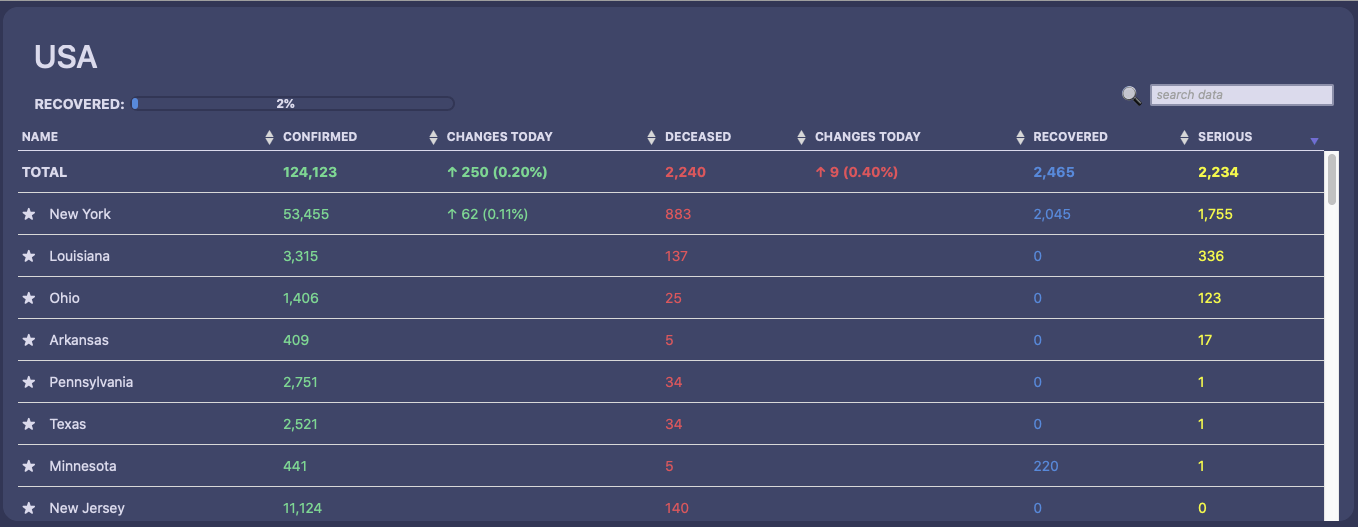Last week, I pointed out that the number of confirmed cases of coronavirus is a meaningless number. The media is all atwitter about it, but the media are mostly idiots. (Never trust a reporter.)
Bloomberg now cites many “experts” who agree with me on this:
It doesn’t matter that the United States surpassed China this week in reported Covid-19 cases because those numbers (83,507 and 81,782 respectively as of March 26) don’t tell us how many people actually became infected in either country. Nor do they tell us how fast the disease is spreading, since only a tiny portion of the population in the United States has been tested.
The number to watch is the number of serious cases in a specific location. Here’s a quick review:
-
Serious cases involve hospitalization and, probably, ventilators.
-
A small number of serious cases in a hospital or one city will not tax the healthcare system.
-
A large concentration of serious cases in one hospital or city will overwhelm the healthcare system.
-
When the healthcare system is overwhelmed, it’s bad not only for people with the virus, but for anyone who needs medical care.
- Heart-attacks
- Car accidents
- Strokes
- Bacterial infections
- etc.
Confirmed cases, on the other hand, is simply a function of testing.
- The more you test, the more positives you find.
- The US is doing the most testing, thus it has the most confirmed cases.
- Confirmed cases that don’t progress to serious don’t tax the healthcare system anymore than confirmed cases of the flu.
A lot of otherwise intelligent people fail to understand this simple statistical logic, thus they say ignorant, terrifying things.
For instance, in their ignorance, many people believe and report that the increase in confirmed cases proves that the disease is still spreading rapidly, but they’re wrong. An increase in confirmed cases tells us nothing about how the disease is spreading, only about how it spread in the past and how many people are getting tested. If we stopped testing today, the number of confirmed cases would be static, but would that mean no one else is getting the disease?
Now that we understand why the number of confirmed cases is meaningless, let’s see what’s happening with the number of serious cases by location, via nCov2019.live, sorted by number of serious cases, descending:

Notice only seven states have any serious cases at all. And of those seven three states have just one serious case each. One state, Arkansas, has just 17.
| State | Serious Cases |
|---|---|
| New York | 1,755 |
| Louisiana | 336 |
| Ohio | 123 |
| Arkansas | 17 |
| Pennsylvania | 1 |
| Texas | 1 |
| Minnesota | 1 |
Things could change, of course, but right now we have all the ventilators we need. Even New York has at least two ventilators for everybody who needs one because of coronavirus. (I realize that people need ventilators for conditions other than coronavirus.)
It is unlikely that a large number of cases will turn serious overnight. This is great news, because it means needs can be anticipated and resources allocated to meet growing needs.
Finally, let’s keep in mind all the things we do not know. By “we,” I mean the entire world. No one knows these things, and anyone who tells you they do is a liar.
We do not know:
- How effective is the Great American Stand-down at arresting the spread of the disease.
- How quickly the disease is spreading.
- How many people have, had, or will get the disease.
- How many people who contract the disease will become serious cases.
We simply do not have enough data even to intelligently speculate. We do have anecdotal and historical evidence, though, to draw some inferences:
- In the Spanish Flu epidemic, cities, like St. Louis, that imposed lockdowns similar to the present one experienced fewer deaths per capita than cities that did not.
- Most people who contract the disease will not require hospitalization.
- Most people who present with the symptoms of the disease (86%) test negative for coronavirus.
- More people have died from influenza (~16,000) this season than have died from coronavirus (~2,240).
- Given the above, the Great American Stand-down is likely limiting the number of new infections and, thus, the number of serious cases.
All this means that our immense sacrifice of liberty and money has probably saved some lives. How many we will never know. Counterfactuals are difficult or impossible to prove.
In the end, as of now, the threat is less than promised by the media and some politicians. I say, let’s get back to work.

